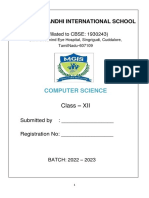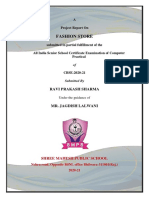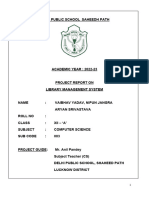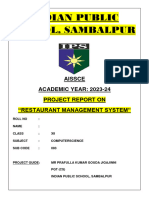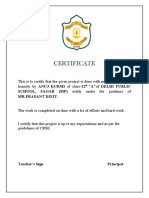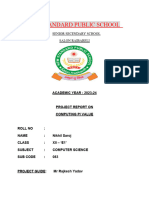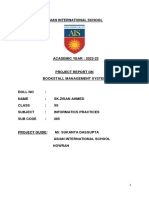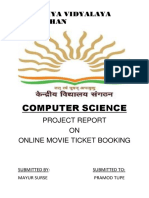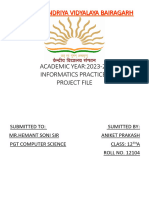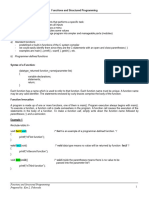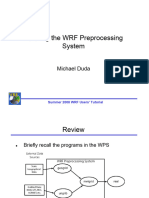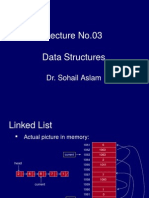0% found this document useful (0 votes)
29 views28 pagesProject File Cs
The document is a project file submitted by Smriti Joshi for her Computer Science class at PM SHRI Kendriya Vidyalaya, Noida, focusing on a Library Management System developed using Python. It outlines the project's objectives, the System Development Life Cycle (SDLC), and various phases involved in the development process, including initiation, planning, design, development, testing, implementation, and maintenance. The project aims to automate library management tasks, improve efficiency, and provide a comprehensive understanding of software development principles.
Uploaded by
jsmriti67Copyright
© © All Rights Reserved
We take content rights seriously. If you suspect this is your content, claim it here.
Available Formats
Download as PDF, TXT or read online on Scribd
0% found this document useful (0 votes)
29 views28 pagesProject File Cs
The document is a project file submitted by Smriti Joshi for her Computer Science class at PM SHRI Kendriya Vidyalaya, Noida, focusing on a Library Management System developed using Python. It outlines the project's objectives, the System Development Life Cycle (SDLC), and various phases involved in the development process, including initiation, planning, design, development, testing, implementation, and maintenance. The project aims to automate library management tasks, improve efficiency, and provide a comprehensive understanding of software development principles.
Uploaded by
jsmriti67Copyright
© © All Rights Reserved
We take content rights seriously. If you suspect this is your content, claim it here.
Available Formats
Download as PDF, TXT or read online on Scribd
/ 28








